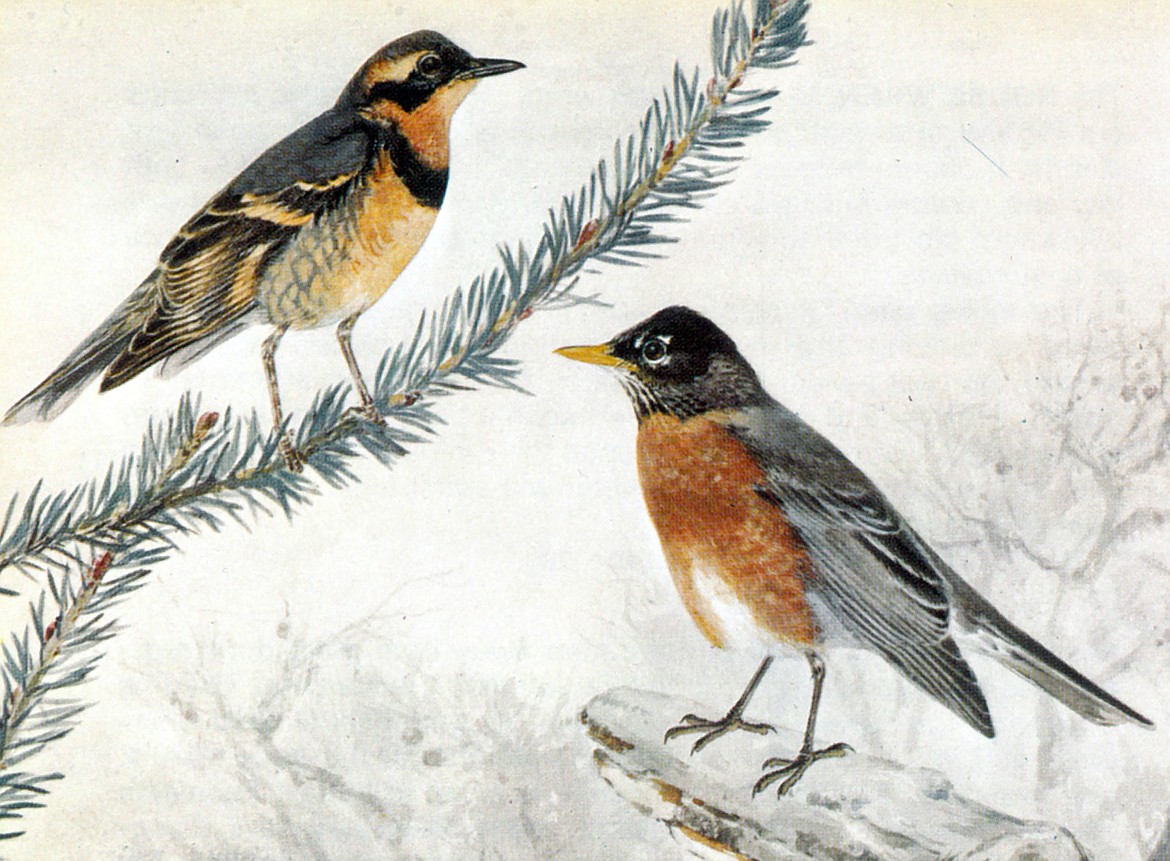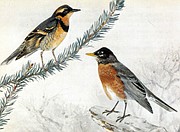Birding adventures and a compendium of valuable garden weeds
The arrival of the spring/summer bird population has been especially rewarding this year. The Towhees with their perky upright tail feathers and their friendly interaction with the large community of tiny Pine Siskins is so endearing to watch, and the onset of other “diners” continues to delight me.
On the last day of April, I was enjoying my “Rhapsody in Black and Orange” — the Towhees of course, the Robins, my long-time resident Varied Thrush — and who should join the throng but a glorious Bullock’s Oriole — the West’s version of the East’s Baltimore Oriole. Talk about glamour in the bird world! I watched them join with the resident Chickadees, Nuthatches and Juncos and thought it absolutely couldn’t get any better than this!
But it did. Later in the afternoon, I took my mid-day snack of Hummus, Milton’s crackers and a couple of string cheese sticks onto the front deck facing the bird bath and settled down to “watch the show.” Out of the corner of my eye, down low and nearly hidden by the leaves, I saw an impossibly brilliant red bird — then another. There were two of them and when they finally came into the open with their buff-and-honey colored female mates, my first thought was Pine Grosbeaks. But these birds were too bright red for that — I was stymied — finally thinking Red Crossbills. I wanted to discount that because I hadn’t seen one of those since the first year I moved into this house 30 years ago — and it had flown into the window and killed itself!
Earnest close scanning finally disclosed their strange crossed beaks and I was — and am — overjoyed to see these rare beauties again. Perhaps there are more around the area but not in mine. Whatever, I count it a real gift,
OK — Sanity time. I just called Mike Turnlund (who writes bird columns for the monthly “Neighbors” insert) and he said they’re not too uncommon around Sandpoint. He once lived close to the library, and saw flocks frequently, So keep your eyes peeled and you, too, may revel in their flamboyant beauty!
I’ve begun planting herbs in the various pots around the property — so far there’s Lemon Thyme, Basil, Sweet Marjoram, Rosemary (planted in its own pot for easy transfer back in the house in the fall), and still need chives, parsley, tarragon and cilantro. I’m looking forward to the Alternative High School’s plant sale. I always purchase one or two of their hanging petunia pots and veggie starts as well. Teacher Randy Wilhelm’s lucky students get the bonus of gardening experience along with the basic courses he instructs.
Speaking of growing things, I recently ran across an old list by the now legendary Robert Rodale of Organic gardening fame. I recently presented my annual companion planting list column — based largely on Rodale’s tenets — and just discovered his “beneficial weeds and wildflowers” for interplanting with the garden veggies/flowers for pest management. Here are a few examples, followed by some weedy tips.
Purslane: This edible weed makes great ground cover in the corn patch or other open-area plantings such as squash, melons, etc.
Pigweed (Lamb’s quarter): One of the best weeds for pumping nutrients into the subsoil, especially beneficial to potatoes, onions and corn. When thinning, use the leaves as steamed spinach. (Our family did!)
Yarrow: Plant along borders, paths, near aromatic herbs; enhances essential oil production.
- Weeds can be used in the compost pile;
- Shredded or just pulled, weeds can be used as mulch, especially around trees and large shrubs;
- Many deep-rooted varieties bring up minerals from the sub-soil and make them available;
- Weeds with powerful roots can break up hardpan, permitting the crop plants to take hold;
- Weeds protect the ground as a cover crop, keeping it from blowing away, and then add their organic matter to it;
- Weeds’ root systems actually make room in the soil for the root systems of crop plants;
- Weeds improve the soil’s aeration and water-soaking ability, thus providing a better environment for soil microbial life.
- Growing, live weeds will not harbor slugs and snails as do many mulches they can hide under;
- For starting a new garden, weeds can tell you what kind of soil you’re working with: if it has sheep sorrel, horsetail and cinquefoil, it’s Acid; if there’s goldenrod, spikeweed, salt grass, it’s alkali; if there’s mustard, nettles, morning glory and quack-grass, it’s hardpan; Smartweed, sedges, bindweed and meadow pinks tell you that poor drainage prevails.
As a personal note, I see dandelions have not been mentioned and I think I know why: Though their greens are edible — good raw or steamed and tossed with oil and vinegar — their root is so deep as to be unmanageable. They would be hard to remove from a garden location.
Feverfew however, pictured above, is a beautiful companion-type “weed” that aerates the soil as well as serving as an attractive ground-cover. It was once used as a medicinal plant and is said by some to deter fleas. It’s tiny daisy-type flowers enhance any garden spot.
Time and space has run out and my Bee update will have to wait for another day. See you next Sunday! V.
Valle Novak writes the Country Chef and Weekend Gardener columns for the Daily Bee. She can be reached at bcdailybee@bonnercountydailybee.com. or by phone at 208-265-4688 between the hours of 8 a.m. to 6:30 p.m.





